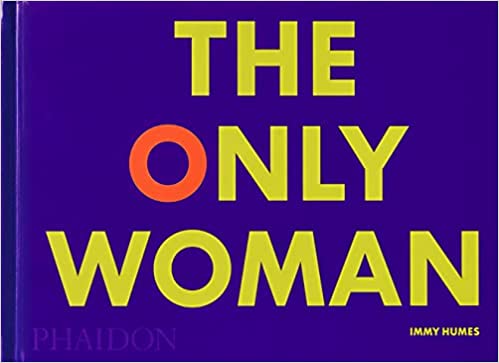Books |
The Only Woman
Immy Humes
By
Published: Sep 18, 2022
Category:
Biography
This is an ideal day to feature “The Only Woman” — the attention of millions is on one woman, and at 6 AM ET Monday, many will wake early to watch her funeral. If you didn’t click this very amusing story on the Weekend Butler, you might want to watch it now.
—
GUEST BUTLER RON FRIED’s novel about the gangster Frank Costello will be published in December. He is a frequent contributor to the Daily Beast.
It started with a 1961 photograph of the cast, crew, and backers of one of radical filmmaker Shirley Clarke’s films. Clarke is the only woman in the photo. The picture fascinated and pissed off Oscar-nominated documentary filmmaker Immy Humes.
Humes was immediately reminded of the famous 1951 photo a group of serious-looking abstract expressionist painters, all dressed as conservatively as bankers. The lone woman joining Rothko, Pollack, De Kooning, and the other fellas, is standing in the upper right side of the frame.
“Why her and only her?” Humes wondered. “What does her onliness mean?”
Those questions were soon of obsessive interest to Humes. The result is “The Only Woman,” a riveting collection of a hundred photos in which only a single woman is present. Each photo is accompanied by Humes’ fact-filled and entertainingly biting commentary.
Full disclosure: Immy Humes has been my friend for many years, and I wrote glowingly about her film about her father Doc Humes, the iconoclastic novelist, proselytizer for pot, and co-founder of the Paris Review.
The women in the photos in “The Only Woman” — Humes calls them her “Onlys” — range from criminals to performers, revolutionaries, students, politicians, and athletes. Hume divides them into “tokens,” “mascots,” “trailblazers,” and “firsts.” Here’s her epigrammatic riff on the tokens: “Tokenism is lying, phony inclusion: appearing to invite the other in while in fact continuing to exclude.”
But back to that photo of the serious-looking painters. The woman hovering over the unsmiling men is painter Hedda Sterne. Sterne later said, “They would tell me, ‘Oh, you’re one of us’ or ‘You paint just like a man.’ That was supposed to make me die with being pleased.” Sterne was married to the artist Saul Steinberg — he of the famous New Yorker magazine covers — but “in the apartment, there was never something of mine on the wall,” Sterne recalled. “And lots of people, our friends, didn’t know I was Hedda Sterne.” Some friends, one might add.
Selecting favorites from the hundreds of “Onlys” isn’t easy. I was drawn to a 1931 police photo of the fabulously sullen-looking Virginia Wright, alias “Bobbie Bates” and “Billie Bates,” the lone woman pictured with her fellow alleged “stick up” suspects in a New York police station.
Then there’s Leona Woods, the only scientist working with Enrico Fermi when the first-ever controlled nuclear reaction was created below a squash court at the University of Chicago. “You are a woman, and you will starve to death,” Woods was told by a would-be mentor, Nobel laureate James Franck.
Marie Curie, “an Only Woman par excellence,” photographed head in hand at a conference of physicists in Brussels in 1931, is a trailblazer who didn’t necessarily open the doors for other women. “The greater the genius of the trailblazer, the harder it may be for mere mortals to follow,” Humes writes with Susan Sontag-like discernment. “Permission to be average can sometimes be the ultimate privilege.”
One of the book’s strengths is that not all of the “Onlys” are saints. So we learn that the French novelist Colette, pictured in 1936 with a group of authors including André Maurois, Paul Valéry, and Francois Mauriac, was no feminist hero. “Suffragettes disgust me,” said the first French woman to receive a state funeral. “Do you know what suffragettes deserve? The whip and the harem.”
Some of the “Onlys” are just “women just doing their jobs: cook, nurse, singer, actress, model, sex symbol, sex worker, servant, and assistant.” These include a Black woman named “Mrs. Fairfax,” seen in an 1862 photo of Union soldiers. A note scrawled across the photo describes her as “Chief Cook and bottle washer.”
Other women are anonymous or unknowable. Sophie Mosseau, a daughter of a Lakota Sioux mother and a French-Canadian trapper father, is photographed wrapped in a blanket among representatives of the US government Peace Commission formed to negotiate with various native tribes. To the small young woman’s left is General William Tecumseh Sherman, no friend of the Lakota. Why Ms. Mosseau is in the haunting photo with all those white guys is a mystery the reader is left to ponder.
“This book is, essentially, a study of power,” Humes writes. “Each photo offers forensic evidence of patriarchy on parade, along with all the other forces of domination.”
I’m planning to give this big, but physically small book — a mere 8.5” by 6” — as a gift to friends’ daughters when they graduate from college. It will certainly entertain them while it wises them up about how the world worked and continues to work.
[To buy the book from Amazon, click here.]


